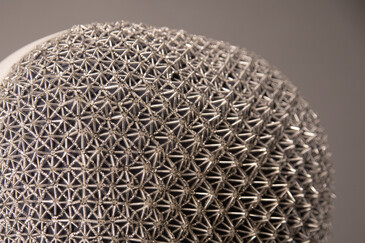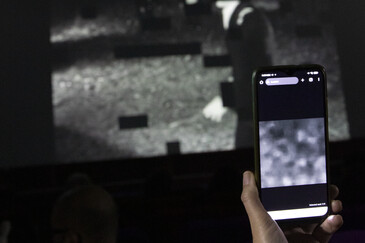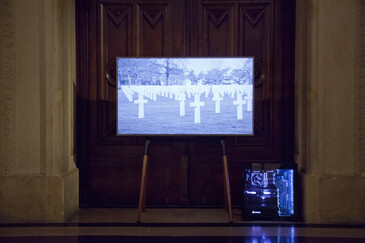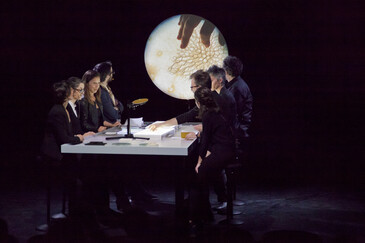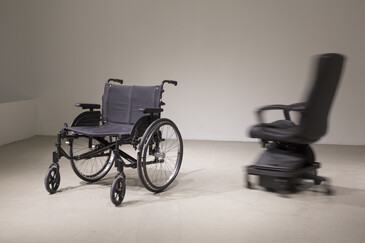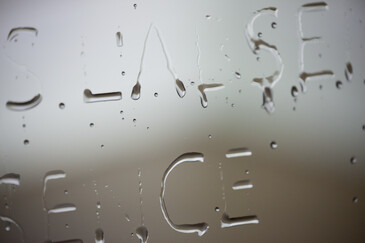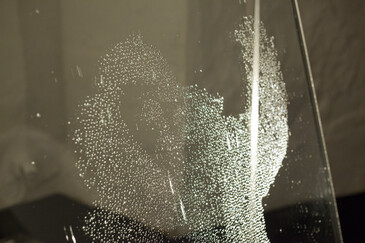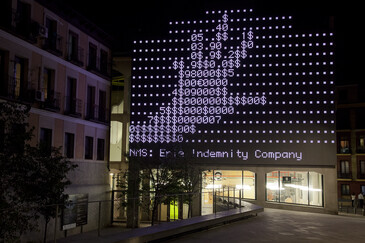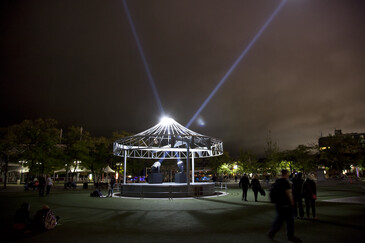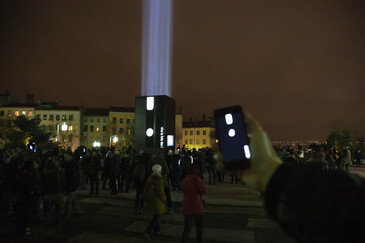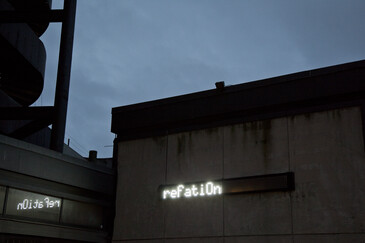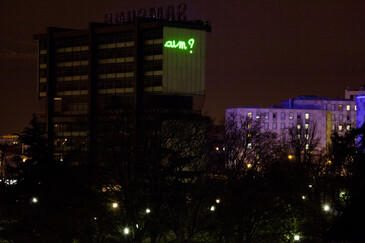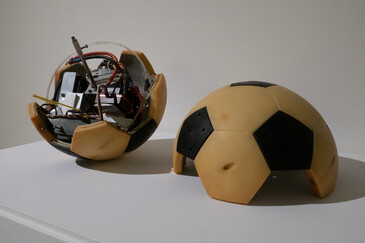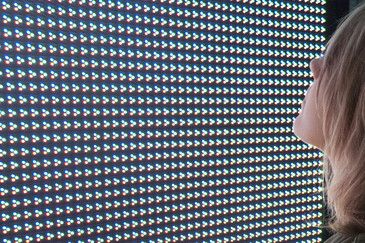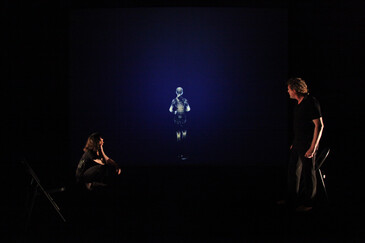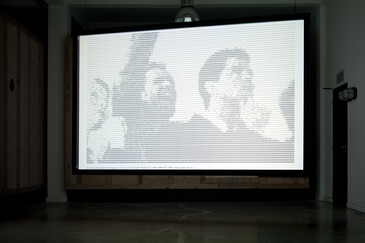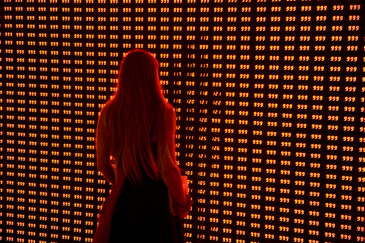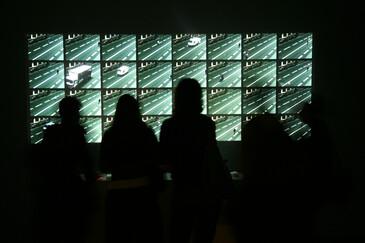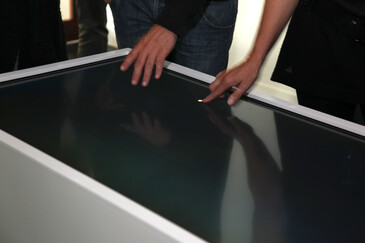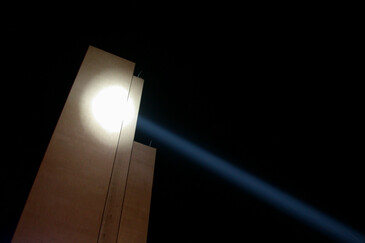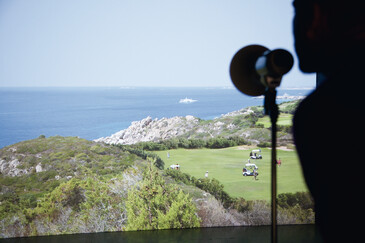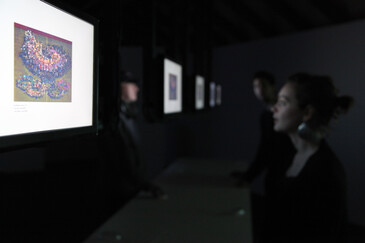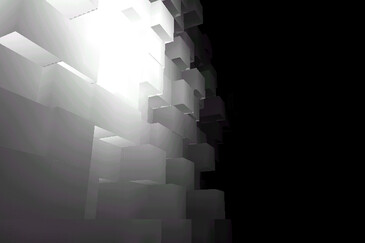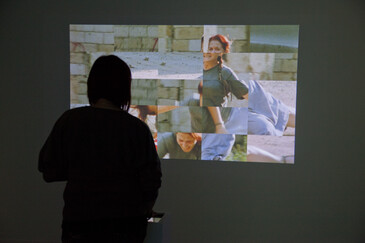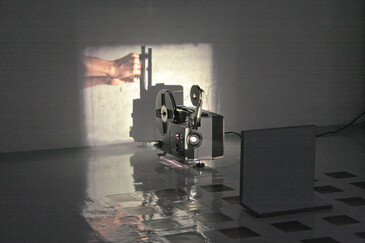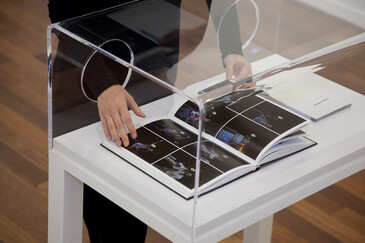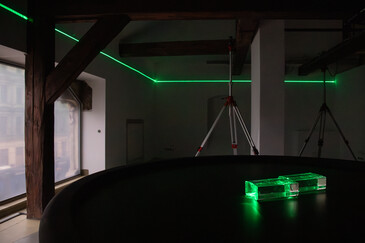
drżenie [tremor]
Interactive Dispositif, 2025
Samuel Bianchini and Klaudiusz Ślusarczyk
with the collaboration of:
Victor Audouze (sound and music design)
Wojciech Sikora (research-creation engineering)
Marzena Krzemińska Baluch and members of the Faculty of Ceramics and Glass at The Academy of Fine Arts in Wrocław: Julia Ciułek, Justyna Dżaman, Grzegorz Bibro, Anna Józefowska (glass research and design)
The project is curated by Klio Krajewska and is designed for the WRO Art Center building, for the 21st Media Art Biennale WRO 2025 (Wrocław, Poland), in the framework of a cooperation between the New Media Art Department of the Polish-Japanese Academy of Information Technology (Warsaw) and the Reflective Interactive Group of EnsadLab, laboratory of the École nationale supérieure des Arts Décoratifs (University Paris Sciences & Lettres).
The pedestal used for this installation was previously designed for The Appprentices (2022) - an art project by Victor Audouze, Samuel Bianchini, Elena Tosi Brandi, Corentin Loubet and Hugo Scurto.
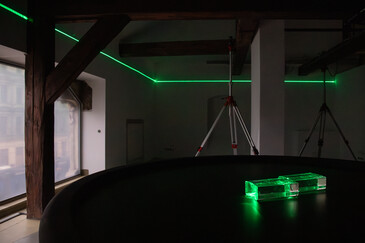

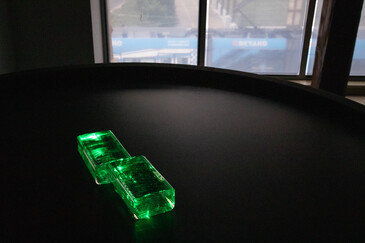

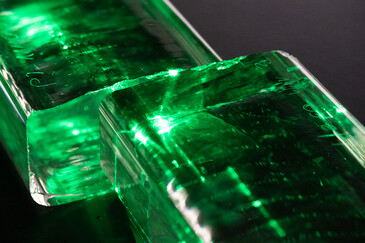
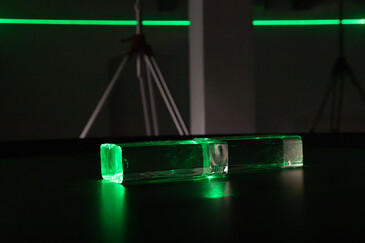

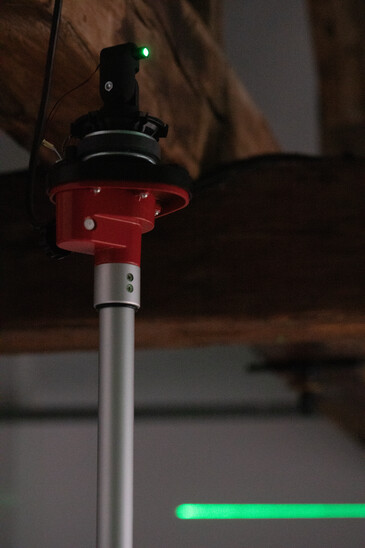
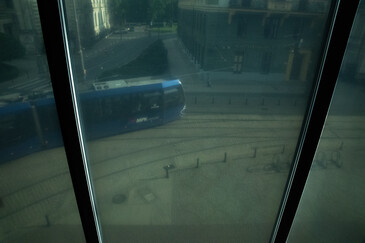
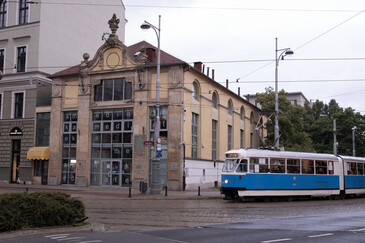
In the heart of Wrocław, the WRO Art Centre building boasts an impressive timber frame, visible in all the exhibition halls of its main wing. This Art Centre is located at the intersection of two large city arteries, where several tram lines run. The vibrations of these trams regularly pass through the building's architecture, amplified by this tangle of beams. This vibrating space reminds us, if any were needed, of the extent to which beings, things, and the environment are interconnected, whether on the scale of a building, the city, a spider's web, or the planet.
How can we translate this interdependence, our interdependencies, through this vibratory space? How can we bring it to life by integrating our own activity, that of the public as well as of the inhabitants? How can we make this eminently analog space perceptible, even tangible? How can we understand these intertwined spaces; let us think of the multitude of vibrations, oscillations and other beats within ourselves or in our environment.
In order to find ourselves in and around this shared vibratory space, to take its pulse, to pay attention to it, and even to learn how to care for it, a unique apparatus has been installed on site. Within the Art Center, this space located at the corner of the building is plunged into semi-darkness, yet still allows the city to be seen through a large bay window covered with a filter.
A large circular base, nearly two meters in diameter, is installed in the center of the room. The base produces vibrations and sounds, a musical composition that seems to rotate regularly inside this pedestal, as in the exhibition space: this sound, produced by transducers, is spatialized.
Evoking a building material, two glass bricks are placed in the center of the pedestal. They come from an old abandoned stockpile of optical glass found in the basement of the Academy of Fine Arts in Wrocław. These glass objects, acting as optical lenses, are traversed by a green laser beam projected at their junction. Other lasers of the same type are placed on surveyors' tripods distributed throughout the room to form a continuous horizon line, more than 2 meters high, which also vibrates. All these lasers are mounted on acoustic speakers that cause them to vibrate at the same time as the sound system: the whole ensemble is part of the same analog vibratory space.
All these light sources, like the captivating sound emitted by the base, vibrate in unison: the whole ensemble depends on the capture of vibrations from the building, which is carried out via geophones installed on the beams. These vibrations are caused by local activities, either within the building itself or around it—such as the passage of numerous trams—or by more distant and profound causes, such as geological activity that is usually imperceptible. Whether through the vibrating and diffracted light rays in the glass object, the line surrounding the room, or the captivating sound composition produced in real time, this apparatus allows us to perceive and immerse ourselves in this vibratory space that is both local and distant, familiar and foreign, and of which we are very much a part.
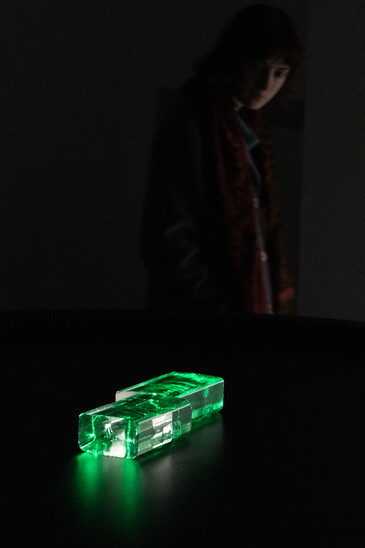
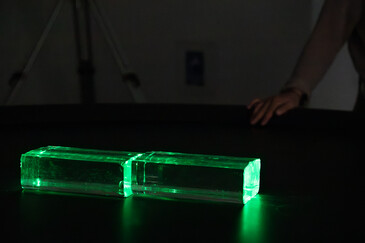

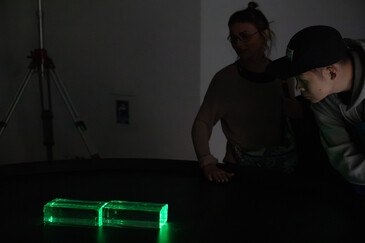
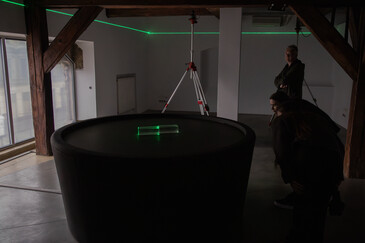
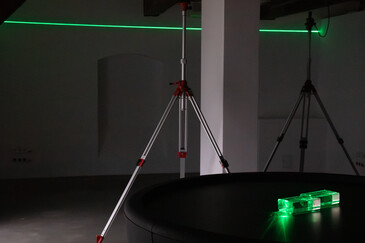
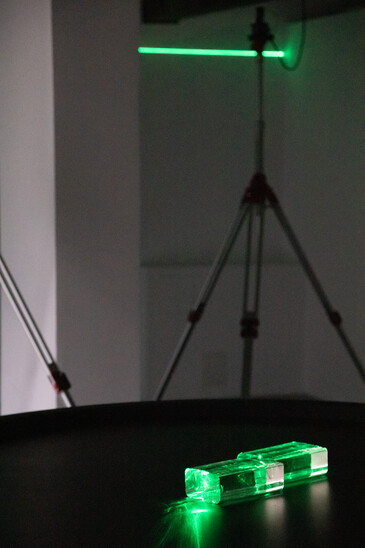
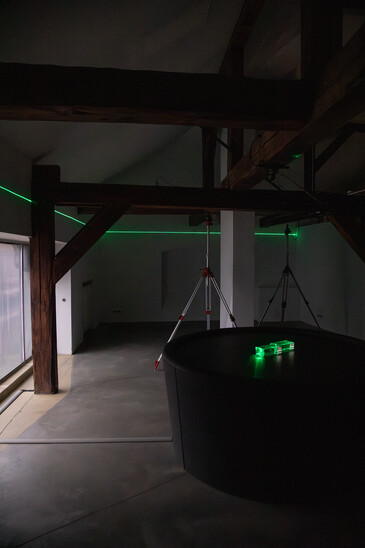
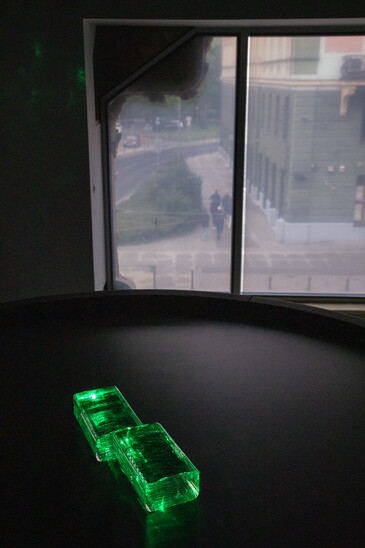

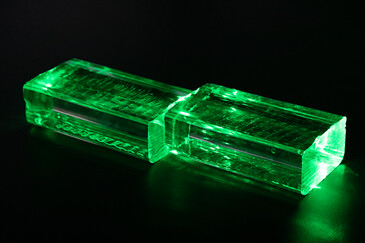
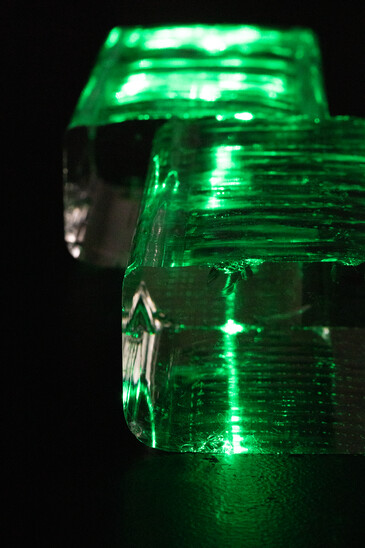
drżenie [tremor], WRO Media Art Biennale, WRO Art Center, Wrocław, May 2025
Photos: © Samuel Bianchini - ADAGP
